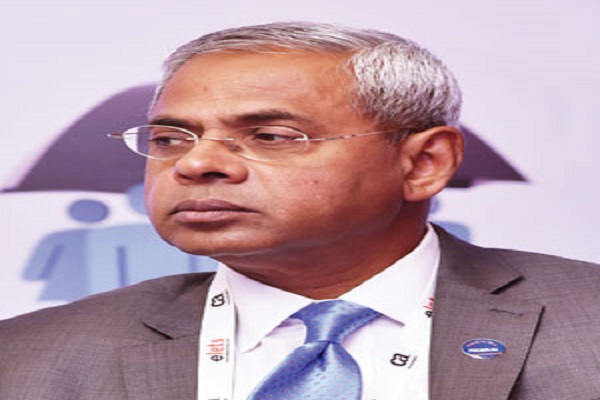
Abraham Chacko, Executive Director, Federal Bank, shares his views with Elets News Network (ENN), about the use of technology in making financial inclusion an existing reality
Now that we have come to a stage of completion of financial inclusion (FI) targets set by the PM, what are your views about its implementation in the country?
The Pradhan Mantri Jan-Dhan Yojana (PMJDY) has been a mission run with a lot of zeal. For example, we as EDs of financial institutions have to be on a con-call meet every Wednesday with the government official in charge, clarifying and justifying weekly targets given to us with regard to PMJDY. With this as the key mandate in the last few months, we have almost 12.5 crore accounts opened across the country. At present, the focus is on three aspects – the Jan- Dhan account, Adhaar Card and the mobile banking aspect; cumulatively named as JAM (Jan-Dhan, Aadhaar and Mobility). The duties involved meeting the target of opening over 12.5 crore accounts by the next fiscal year.

Linking Aadhaar with bank accounts through RuPay Card will ensure getting subsidies easily, thus, bringing a transformation in the ground scenario. However, there are cases of duplicity or a single person holding more than one bank account under PMJDY, through various business correspondents etc.
Even then the first step towards opening bank accounts for the masses is 75 per cent accurate. Now, further action should be to ensure financial inclusion even in the last mile and also ensure whatever money is lying among the population is enrolled under the financial institution scheme.

What about the rural scenario?
We have to also make sure that we shift our focus to the rural areas, which we ignored in the last 20 years. To facilitate an overall inclusion of the rural population, we might have to spend a bit of extra money in issuing more and more RuPay cards, through which the rural population will get real-time benefits. Thus, the key is to get the entire lot of PMJDY bank accounts into transactional accounts. Another important aspect that payment institutions or banks must focus on is to create mobile wallets for customers residing in a different town or states. Small points like departmental stores in that specific region can be the payout points to the customers.
Technology has influenced almost all or every sector of operation across the nation. To what extent has it influenced banking industry?
Today, banking is the biggest user of technology, given its massive customer base awaiting mobility for the ease of banking. There were days when banking ledgers were printed through electro-magnetic machines, later done by posting machines. However, the figure has grown up to as much as 45,000 bank branches in the last four years, which is remarkably well. These days, entire banking operations are fit to be called paperless including transactions. Customers these days do not visit banks much for any kind of transactions. Newer innovations are taking place in the industry ensuring bestin- class facilities for customers; thus, leading the industry towards modernisation every day.
With e-banking and mobile banking launched, banking sector has got a new identity ensuring ease to its facilitators, cutting out the complications As a matter of fact, the basic platform for payments that is introduced to customers has to be very sophisticated. There is a huge scope of innovations for banks in this space. Thus, it can be rightly said that they are no longer the conventional institutions where people flocked in the month-end to collect their pensions.
What were the challenges being faced while implementing IT and ICT in the Tier II or Tier III cities?
There was or is no challenge when we implement IT or ICT in the Tier II or Tier III cities. People today are tech-savvy; almost everyone today has smartphones and mobile banking facility ensured in their hand-held devices. However, in terms of tech literacy, we are still lagging behind as a nation to some extent. Financial institutions have to organise thorough knowledge enhancement sessions for rural people when they introduce any new technology in this scenario.
Another aspect impeding smooth functioning of technology in this sector is tech connectivity or infrastructure, which is of poor quality, to ensure seamless connections.
But on the positive side, we are able to monitor each and every branch from the head office itself. We can easily figure out which ATM has how much currency and what amount is being transacted from the point; which renders us the real power of technology.
What is your take on the concept of plastic money? How far do you think that the economy is behind from adopting cashless transactions entirely?
It will be time consuming for the entire economy to go cashless. Even cities like Singapore, which is hi-tech and draws people from other countries for tourism, education and employment, are yet to be converted into an entirely cashless economy, even though there is a huge cash inflow. However, partly, we are converted to cashless structure wherein we transact through cards in places like food courts, shopping malls, multiplex etc. Even if you book a radio cab today, you need not carry cash if you have a mobile wallet, through which you can clear off your bill. However, five years down the line, we will be able to witness greater use of technology.
Be a part of Elets Collaborative Initiatives. Join Us for Upcoming Events and explore business opportunities. Like us on Facebook , connect with us on LinkedIn and follow us on Twitter, Instagram.











